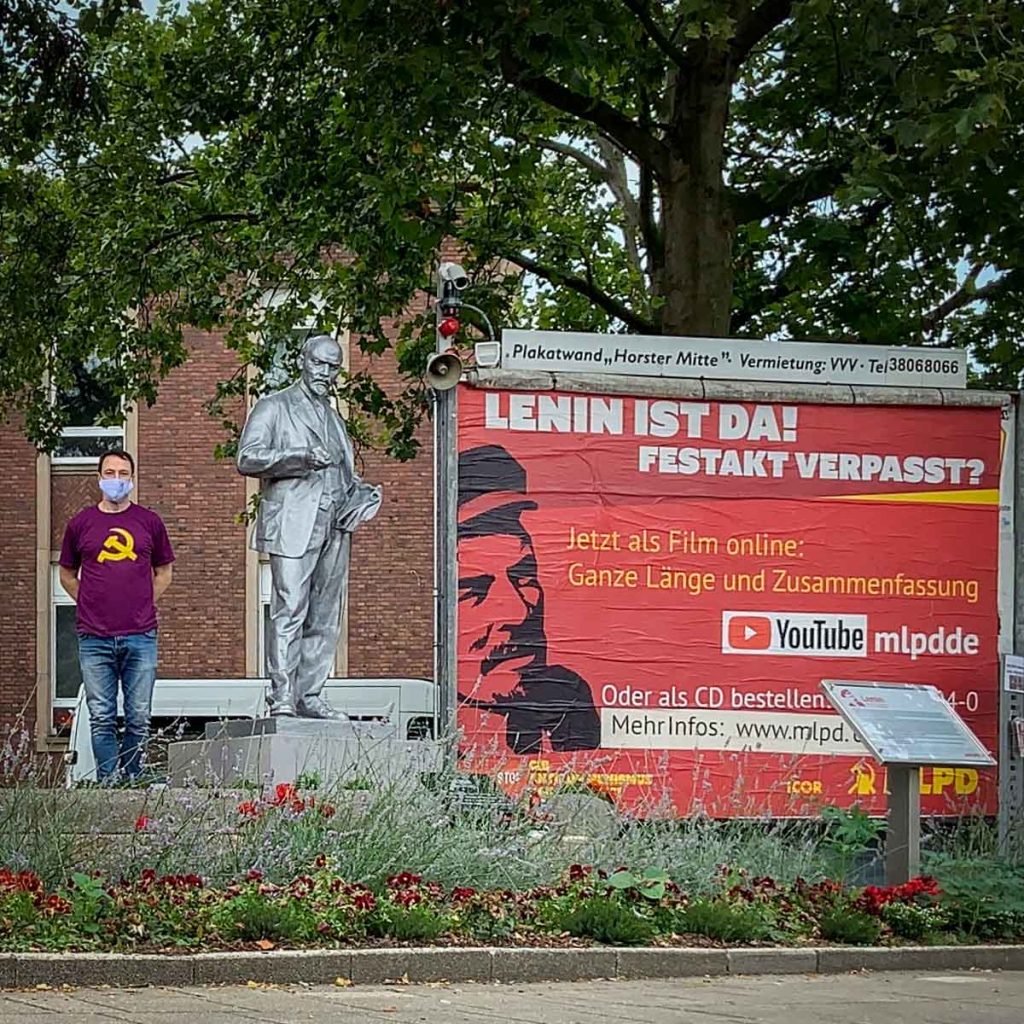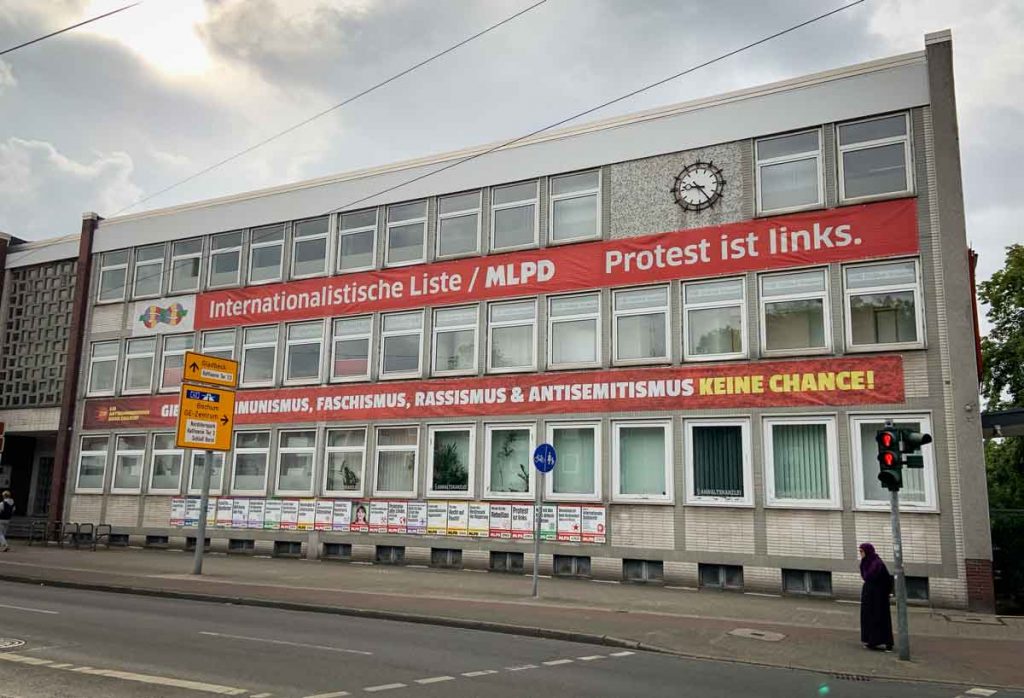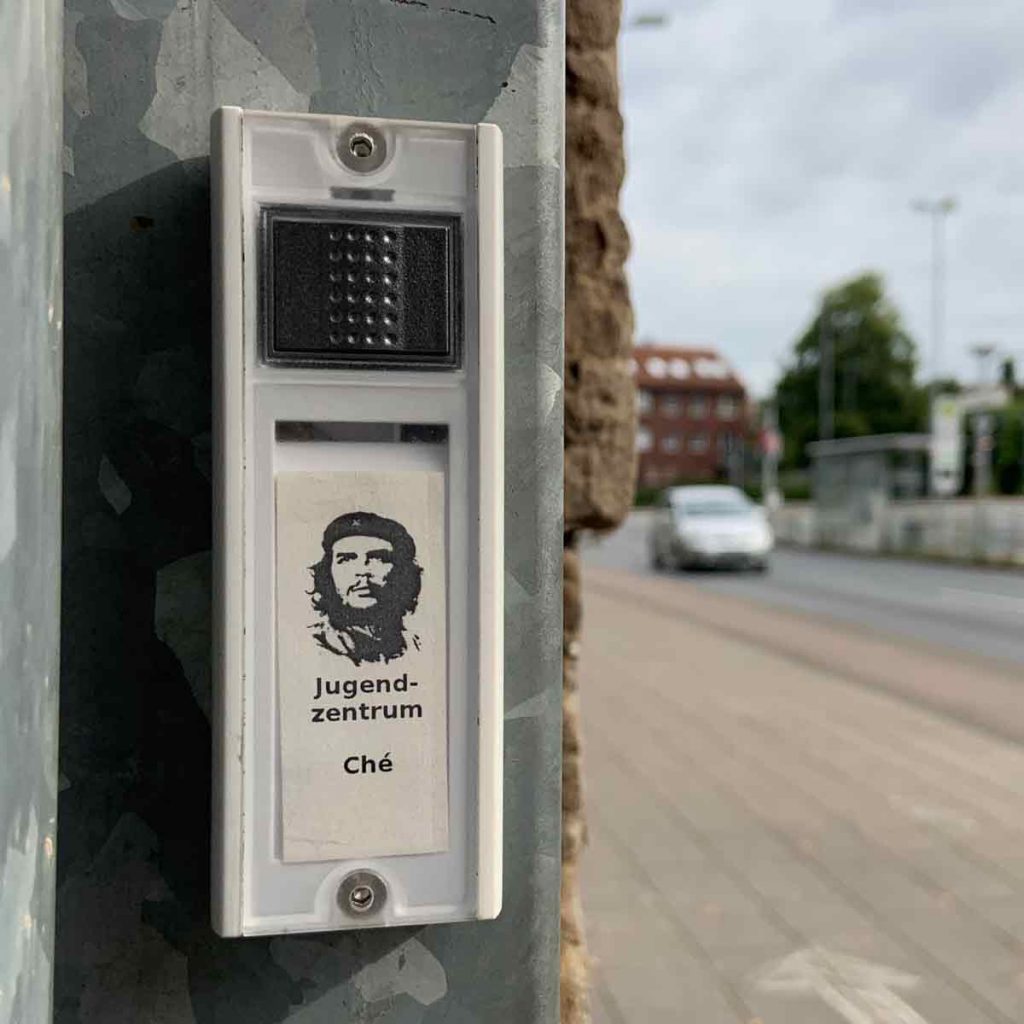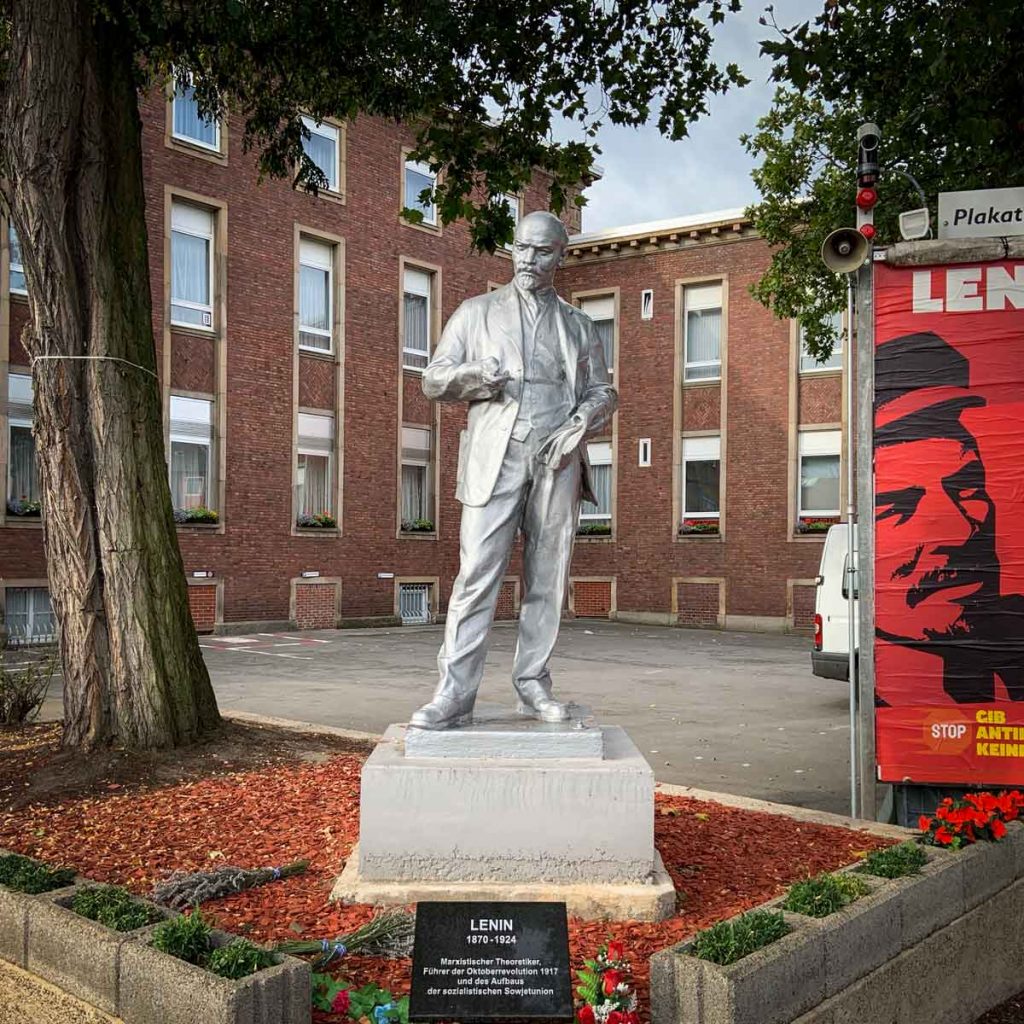Situated in the industrial heartland of western Germany, the city of Gelsenkirchen might seem an unlikely place to find a Lenin statue. The city was flattened by bombs during the war, and subsequently rebuilt as a modern, pleasant but rather unremarkable place. Coal and oil refining were the main activities and the people working in manual jobs in mines and factories proved fertile ground for left-wing politics.
The Marxist-Leninist Party of Germany (MLPD) was founded in 1982, and is so far left that even today many trade unions will expel anyone found to be a member. Recently the party decided it would be appropriate to erect a statue of their Bolshevik hero outside the party HQ building in Gelsenkirchen; however, the local authorities had other ideas. The result was a high-profile court case that the MLPD won with the help of some smart sympathetic lawyers. The party had already obtained a second-hand bronze Lenin statue, so they wasted no time in securely cementing it into place. The inauguration was well-attended despite the ongoing pandemic.
With a few days to spare in Germany, I decided to check out one of the very few public Lenin monuments in the western world. Getting to Gelsenkirchen during the pandemic meant an overnight journey and a 7am arrival. I decided to walk the 6 km from the central station to the MLPD HQ – there’s no better way to get a feel for a city than walking the streets, which were almost empty apart from the occasional early-morning dog walker.
Party HQ
The party HQ building is a typical 1970s office building but it stands out with propaganda posters prominently displayed on its walls. There’s a Che Guevara youth club round one side of the building. I take a quick picture of the Che Guevara doorbell, to show to his wife who is a neighbour of mine in Havana. Around the other side is the entrance to the not-at-all-amusingly-named Willi Dickhut Museum of the German Labour Movement, which was sadly closed when I visited.
The Lenin statue itself is dignified. Rather smaller than some of the mammoth monuments elsewhere, it’s raised only slightly above ground level in the shade of a tree, giving it a human scale. It looks out across the street, surveying the workers at the tram stop, which was empty during my visit but would be a busy hub on a weekday.
Talking Lenin Statue
Just as I’m finished taking pictures, a voice crackles out from the statue. “Hello comrade, can you hear me?”
Slightly startled, I realise it’s coming from the loudspeaker placed atop the billboard just behind the Lenin statue. Unsure if the invisible ventriloquist could hear me, so I gave a thumbs up to the security camera. “Stay there for 20 minutes and I’ll come and see you”. “OK”, I indicate…
In true German style, 19 minutes and 37 seconds later a friendly chap approached and introduced himself as Michael, a volunteer with the Marxist-Leninist Party. He explained that they remotely monitor the security cameras around the building due to frequent vandalism by anti-communists. However, my hammer and sickle T-shirt reassured him that I wasn’t an anti-communist, so he kindly offered me a lift back into town where we went for a coffee.
The Marxist-Leninist Party
He explained to me a little about the party’s origins. I asked him how many people are in the party – apparently that is a secret, but ‘the German Federal Intelligence Service estimate us at 2,500 members’!
The party is fully committed to Marxism-Leninism but Michael takes care to point out that they are not apologists for the former East German government. They support the North Korean people’s right to run their country as they choose but do not support the current DPRK leadership.
He says that the party next plans to erect a monument to Karl Marx, to pay tribute to their other eponymous hero and to keep their Lenin statue company…
Roll on Marx!









